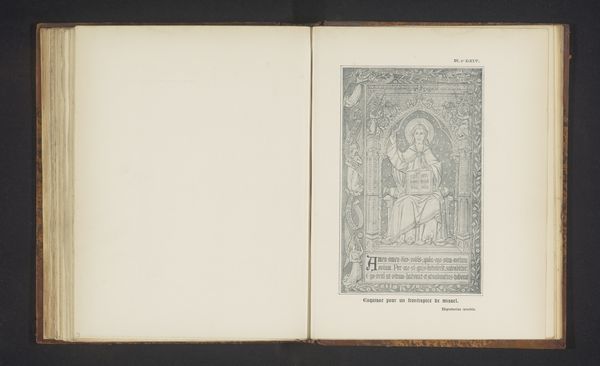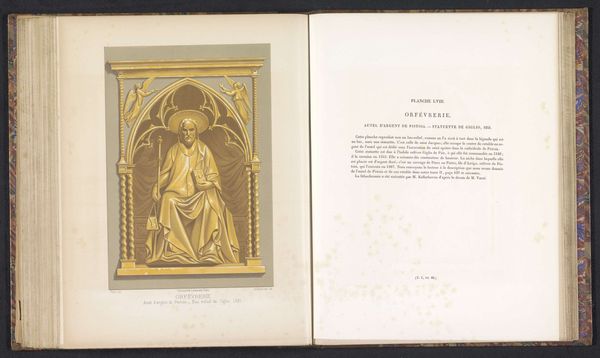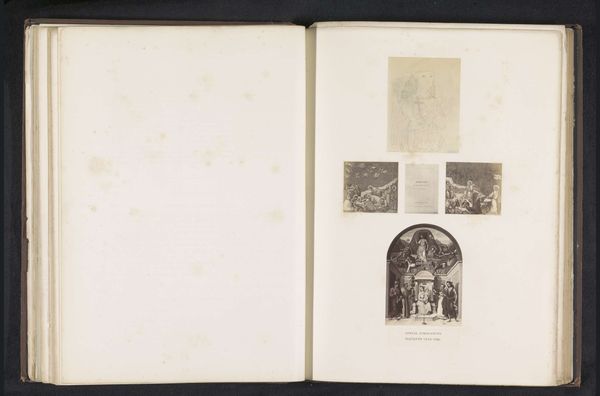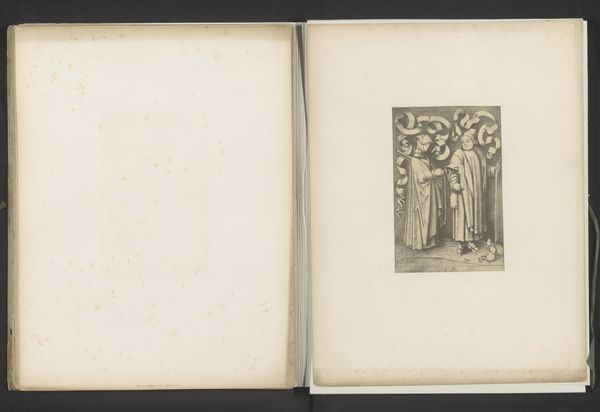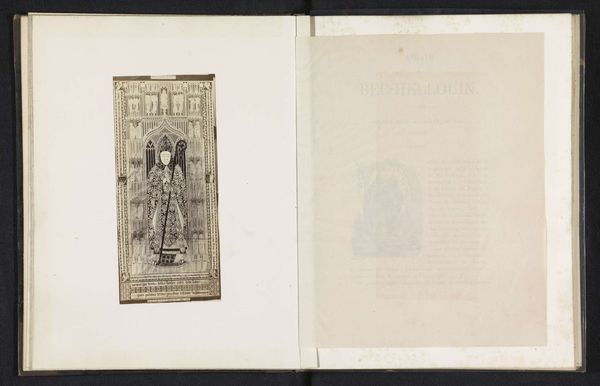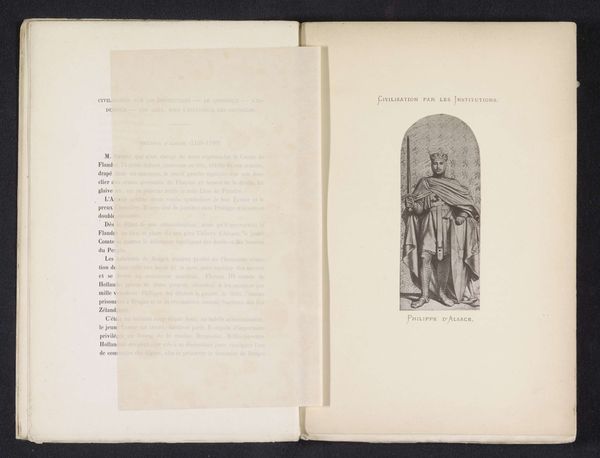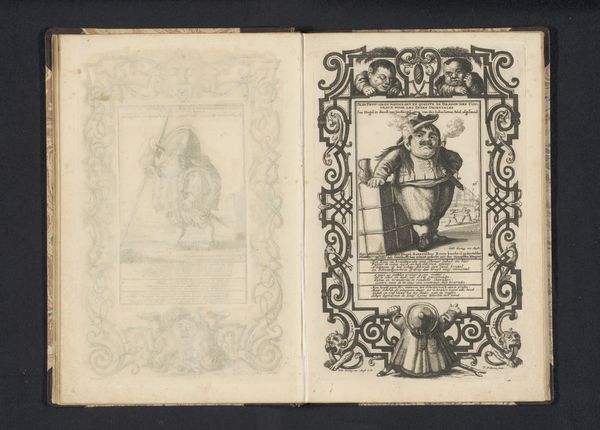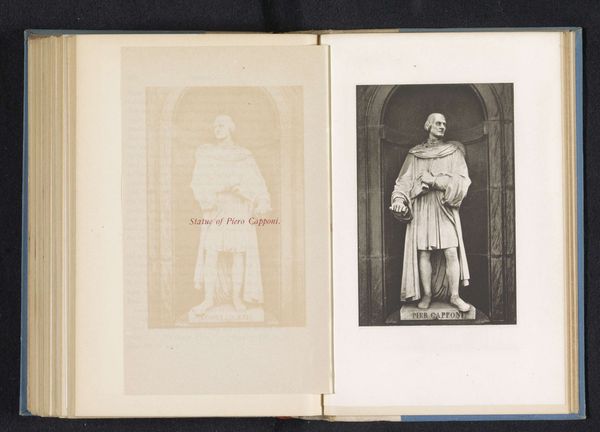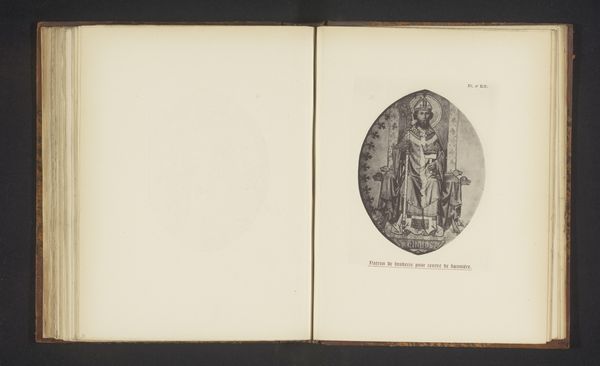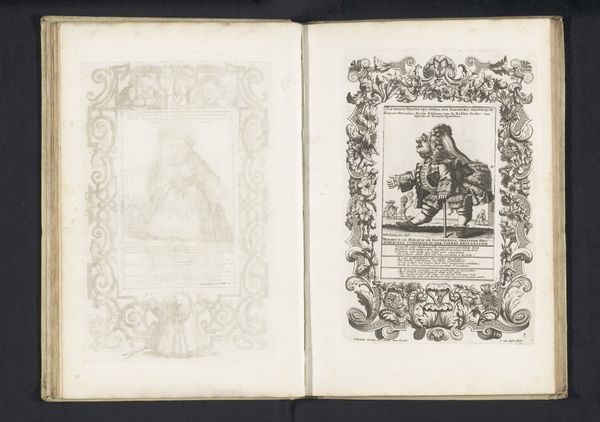
Fotoreproductie van een stempel naar een grafsteen van Charles de Boscherville in een kerk in Neuville-sur-Authou before 1861
0:00
0:00
drawing, paper, ink
#
portrait
#
drawing
#
medieval
#
figuration
#
paper
#
ink
#
line
#
history-painting
Dimensions: height 183 mm, width 84 mm
Copyright: Rijks Museum: Open Domain
Curator: This work, made before 1861, is catalogued as a "Fotoreproductie van een stempel naar een grafsteen van Charles de Boscherville in een kerk in Neuville-sur-Authou," attributed to an anonymous artist. Editor: My initial reaction is a strong sense of the handcrafted. The thick ink lines on what appears to be textured paper really emphasizes the labor behind it. It almost feels like a direct rubbing. Curator: That's astute. As a historical record, these reproductions circulated widely. The stamp from the tomb became a form of memorial existing far beyond the church itself. The accessibility of printmaking made it democratic in a way. Editor: I wonder about the material relationship here – the literal pressing of stamp onto paper, mimicking the very inscription on the gravestone. How does that process relate to memory, to preservation of material culture? Curator: It underscores the societal significance of remembrance, I think. We see a simplified image of the knight; the clean lines almost idealize him. It taps into larger conversations about aristocratic identity and virtue during that time period. Editor: Though, that simplification is key. A stamp inherently flattens and repeats. Was there a factory churning these out for profit? Or more likely a small shop eking a living from the past? I bet the quality of paper, ink type, all fluctuated based on access and demand. Curator: And those fluctuations tell us about social consumption. Were these mass produced or commissioned for personal remembrance? How was Charles de Boscherville viewed by subsequent generations of the church and the region? Editor: The fact it’s a photographic reproduction, though, adds a layer. The stamp preserves the tomb, but the photo preserves the stamp – making it two steps removed. The image accrues meaning through the material history. Curator: Exactly. By examining this layered history we gain valuable insights into the creation, circulation and social context of this historical artwork and medieval society's interaction with memory. Editor: Considering the interplay between the artist's hand and mechanical reproduction gives an appreciation of how materiality mediates and shapes narratives about the past.
Comments
No comments
Be the first to comment and join the conversation on the ultimate creative platform.
